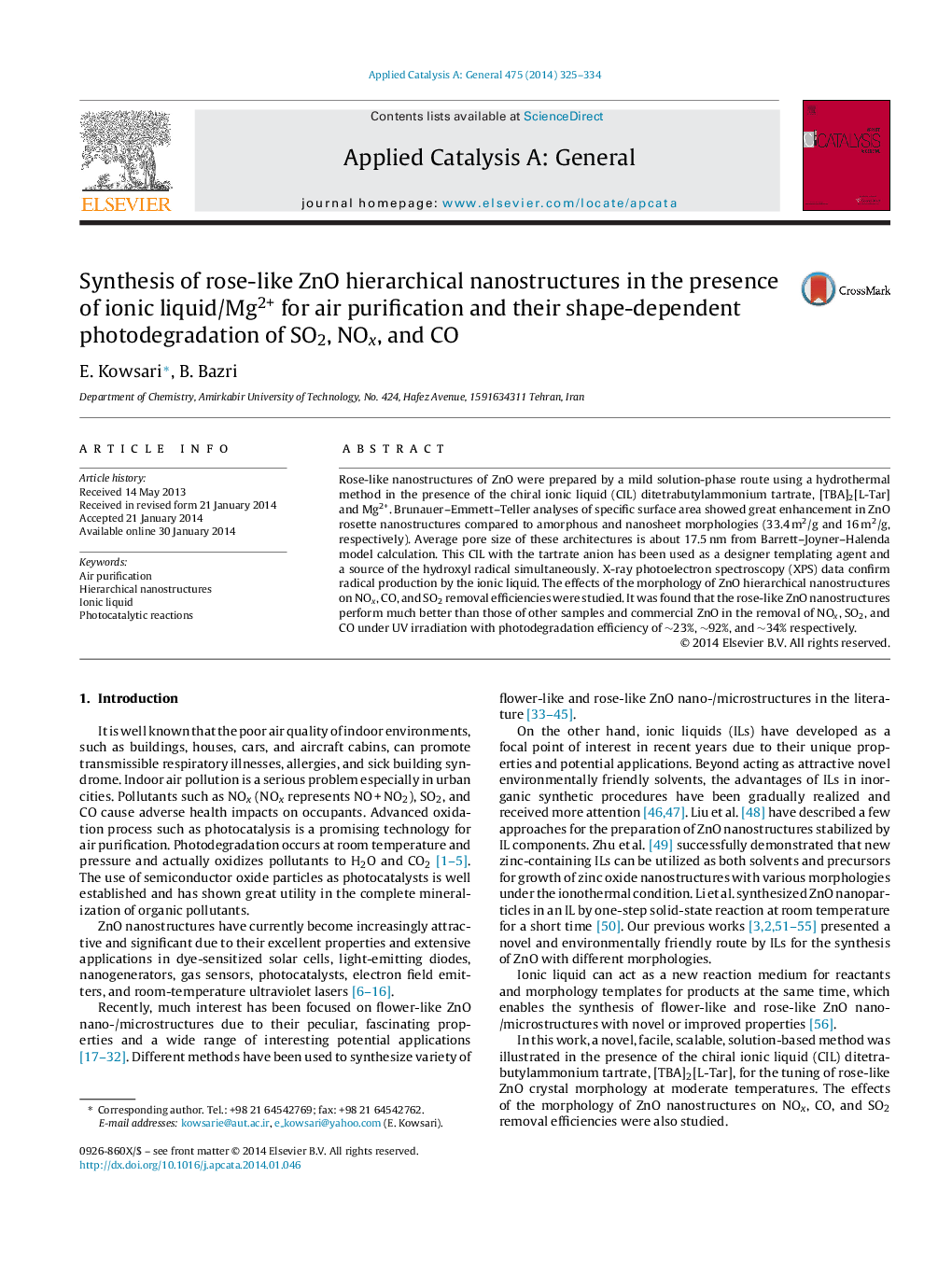| Article ID | Journal | Published Year | Pages | File Type |
|---|---|---|---|---|
| 39849 | Applied Catalysis A: General | 2014 | 10 Pages |
•Novel rose-like ZnO nanoflowers synthesized by IL with the tartrate anion.•IL as a strong complexing agent was found to play a key role in the shape evolution.•PL spectra show that the rose-like ZnO nanostructures have more defects than the others arrays.•ZnO hierarchical nanostructures on NO, CO, and SO2 removal efficiencies were studied.
Rose-like nanostructures of ZnO were prepared by a mild solution-phase route using a hydrothermal method in the presence of the chiral ionic liquid (CIL) ditetrabutylammonium tartrate, [TBA]2[L-Tar] and Mg2+. Brunauer–Emmett–Teller analyses of specific surface area showed great enhancement in ZnO rosette nanostructures compared to amorphous and nanosheet morphologies (33.4 m2/g and 16 m2/g, respectively). Average pore size of these architectures is about 17.5 nm from Barrett–Joyner–Halenda model calculation. This CIL with the tartrate anion has been used as a designer templating agent and a source of the hydroxyl radical simultaneously. X-ray photoelectron spectroscopy (XPS) data confirm radical production by the ionic liquid. The effects of the morphology of ZnO hierarchical nanostructures on NOx, CO, and SO2 removal efficiencies were studied. It was found that the rose-like ZnO nanostructures perform much better than those of other samples and commercial ZnO in the removal of NOx, SO2, and CO under UV irradiation with photodegradation efficiency of ∼23%, ∼92%, and ∼34% respectively.
Graphical abstractFigure optionsDownload full-size imageDownload high-quality image (183 K)Download as PowerPoint slide
